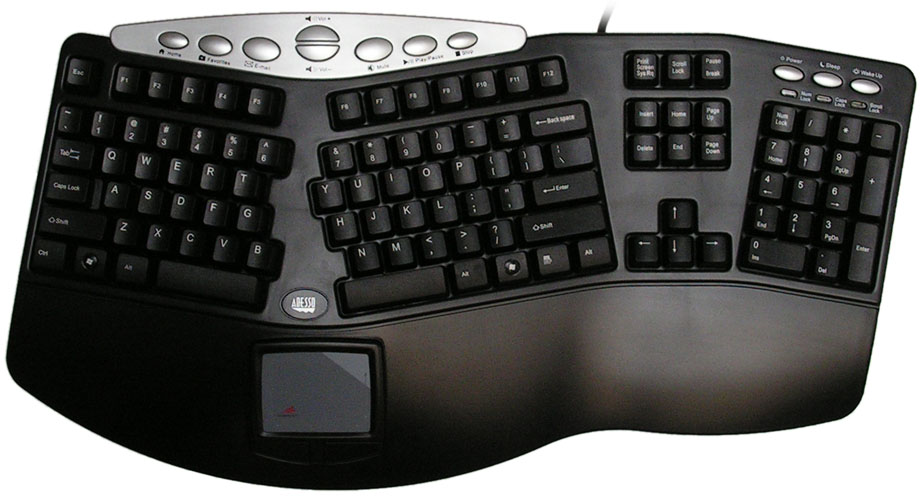It is a keyboard that separates the keys into two halves shaped like a wide "V." Some keyboards have a fixed layout, while others are movable. To the touch typist, the layout feels odd at first, it puts less stress on the hands and wrist. It also winds up being comfortable for most people.

Inkjet Printer
Inkjet printers are the most common type of consumer printers. The inkjet technology works by spraying very fine drops of ink on a sheet of paper. These droplets are "ionized" which allows them to be directed by magnetic plates in the ink's path. As the paper is fed through the printer, the print head moves back and forth, spraying thousands of these small droplets on the page.
While inkjet printers used to lack the quality and speed of laser printers, they have become almost as fast as laser printers and some can even produce higher-quality images. Even low-budget inkjet printers can now print high-resolution photos. The amazing thing is, as the quality of inkjet printers has improved, the prices have continued to drop. However, for most people, refilling the inkjet cartridges a few times will often cost more than the printer.

Laser Printer
Magnetic-ink Character Reader (MICR)
As an Optical Character Reader (OCR) is not perfect at converting standard printed text into electronic form, there is a more reliable system available. It is called the magnetic ink character reader.
Advantage:
- Very reliable, low errors
- High speed
- Not so sensitive to grubby paper.
Disadvantage:
- The ink technology is relatively expensive
- The font has to be specific.

Optical-Character Recognition (OCR)
Often abbreviated OCR, optical character recognition refers to the branch of computer science that involves reading text from paper and translating the images into a form that the computer can manipulate (for example, into ASCII codes). An OCR system enables you to take a book or a magazine article, feed it directly into an electronic computer file, and then edit the file using a word processor.

Optical-mark Recognition (OMR)
Optical Mark Recognition (also called Optical Mark Reading and OMR) is the process of capturing human-marked data from document forms such as surveys and tests. Many traditional OMR (Optical Mark Recognition) devices work with a dedicated scanner device that shines a beam of light onto the form paper. The contrasting reflectivity at predetermined positions on a page is then utilized to detect the marked areas because they reflect less light than the blank areas of the paper.



No comments:
Post a Comment